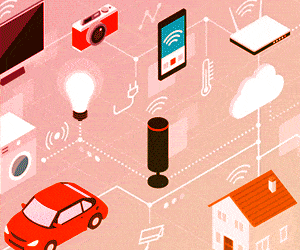Today’s designs often feature many different elements, including microcontrollers or field-programmable gate arrays (FPGAs), serial and parallel buses, analogue-to-digital converters (ADCs), digital-to-analogue converters (DACs) and power supplies, all in a single design. This creates debug challenges for the design engineers.
Designers must monitor a wide range of signals to troubleshoot system-level problems. They may need to trace data flow through their device, requiring them to look at several buses and time-correlate data packets. Or, they may need to troubleshoot a mixed-signal element like an ADC or DAC with both digital and analogue signals. Or, they may need to look at the modulation characteristics of their pulse width modulator. Looking at crosstalk between signals would be another example.
Troubleshooting complex embedded system designs often requires looking at several signals at one time. Tracing data flow through a design may require looking at two 3-wire buses. Troubleshooting an ADC may require looking at an 8-bit parallel bus and an analogue signal. These complex designs often require more than the four channels available on a traditional oscilloscope.
[stextbox id=”info” caption=”Challenges before test engineers”]• Cycle or test time. A whole lot of time is consumed setting up the entire test procedure and creating the test bench
• Verification between design and setup fault
• Fast technological advancements/fast obsolescence
• Cost of equipment/returns on test investments
• User-friendliness/ease-of-use[/stextbox]
[stextbox id=”info” caption=”Some new approaches to tests”]• An automated test environment which reduces test times. Users just need to select the particular test and the whole process is taken care by the T&M equipment
• Modular, scalable, software-defined T&M equipment
• One-box solutions with multiple T&M feature sets
• Easy to operate/understand user interface[/stextbox]
Designers also need more than just signal visualisation. Serial and parallel buses have become pervasive across applications. In a recent product research, it was found that about 60 per cent of scope users are currently integrating serial buses in their designs. And, about 50 per cent are including parallel buses. The interesting part was that these percentages held true across oscilloscope performance levels—from less than 300 MHz to 2 GHz.
Efficient debug of serial and parallel buses requires automated trigger, decode and search for serial packet content or parallel data. Otherwise, the design engineers are forced to manually decode their signal and to figure out how to trigger on signal characteristics, not data values. Both are time-consuming and frustrating tasks.
Digital video challenge. Digital TV has enabled a series of new delivery mechanisms. The traditional mechanisms of cable, satellite and terrestrial all still exist but are being upgraded to support the delivery of DTV. New delivery mechanisms such as IP for IPTV, the public Internet for streamed video and DVB-H are enabling new broadcasters.
The increasing availability of digital standard-definition and high-definition systems has led to a proliferation of video display formats. Each of these formats has increasing quality and increasing bandwidth requirements. The new video formats for HD TV have driven the need for video to be delivered at higher and higher bit rates. This is similar to the issues with advancing serial data rates.
The architecture of DTV systems has caused a shift away from pure signal integrity measurements to a need to ensure that not only is the signal good but the content contained in the signal is also correct.
Next-generation network. With the convergence of voice, data and video into the latest-generation IP multi-service mobile and fixed networks, the requirements for monitoring and testing networks and elements are becoming more complex every day.
When developing a new network element or testing live network, customers need to be able to troubleshoot any problem and correct it as quickly as possible. With the increasing data rates and amount of information exchanged through the network, the chances for error are greater than ever as are the consequences for their business of a poor service delivery.
The entire telecommunications industry is in a constant state of transition—always moving forward with greater technological discoveries. The customers need a comprehensive unified assurance line that provides integrated, end-to-end monitoring solutions for active troubleshooting, provisioning as well as automated service quality monitoring.
Wireless/telecom engineers are faced with more signal bandwidth occupied by complex digital modulation schemes and complex antenna arrangements. Here buzzwords like WiMAX, LTE with OFDM and MIMO architecture are example challenges for T&M equipment providers.
Semiconductors. Sizing and scaling pose temperature and self-heating challenges for semiconductor customers, which are tightly linked with demands from research customers. Of course, power consumption plays crucial role, while constantly reducing supply currents. On the contrary is the increasing demand for higher ampere and volt ratings.










